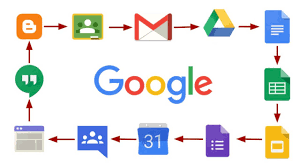
Overview
Overview
Course Features
- Lectures 176
- Quiz 0
- Duration 10 weeks
- Skill level All levels
- Language English
- Students 5
- Assessments Yes
Curriculum
Curriculum
- 18 Sections
- 176 Lessons
- 10 Weeks
Expand all sectionsCollapse all sections
- EMAIL ADDRESSES3
- SUBJECT LINES7
- 2.12.1 Compose the subject line from the recipient’s perspective
- 2.22.2 Combine your subject line with the preview pane
- 2.32.3 Include name of a mutual third party in the subject line (and in cc) in a mail to a new contact
- 2.42.4 Make it clear if your mail only requires very limited effort on the part of the recipient
- 2.52.5 Be specific, never vague
- 2.62.6 Consider using a two-part subject line
- 2.72.7 Ensure that your subject line is not spam friendly
- INITIAL SALUTATIONS6
- 3.1Avoid gender titles (e.g. Mr, Mrs) in first email to new contact
- 3.23.1 Avoid gender titles (e.g. Mr, Mrs) in first email to new contact (cont.)
- 3.33.2 Spell the recipient’s name correctly
- 3.43.3 Use ‘Dear + first name + second name’ only in the first contact
- 3.53.4 Be careful of punctuation
- 3.63.5 Choose a specific job title when addressing an email to someone whose name you do not know
- INTRODUCTIONS AND FINAL SALUTATIONS11
- 4.14.1 Explain where you got your contact’s details from
- 4.24.2 Introduce yourself to a new contact
- 4.34.3 Give details about who you are and what you are requesting
- 4.44.4 Introducing someone to a third party
- 4.54.5 Reminding a contact who you are
- 4.64.6 Begin with a greeting + recipient’s name
- 4.74.7 Indicate which of the multiple recipients actually needs to read the mail
- 4.84.8 If in doubt how to end your email, use Best regards
- 4.94.9 Don’t use a sequence of standard phrases in your final salutation
- 4.104.10 Ensure your signature contains everything that your recipient may need to know
- 4.114.11 Avoid PSs and anything under your signature
- MAKING REQUESTS7
- 5.15.1 Decide whether it might be better just to make one request rather than several
- 5.25.2 Lay out your request clearly and give recipients all the information they need to carry out the request
- 5.35.3 Avoid blocks of text and don’t force your reader to make sense of everything
- 5.45.4 Make all your requests 100 % clear
- 5.55.5 For multiple requests, include a mini summary at the end of the email
- 5.65.6 Give deadlines
- 5.75.7 Motivate the recipient to reply by empathizing with their situation or by paying them a compliment
- REPLYING TO REQUESTS5
- CHASING AND BEING CHASED8
- 7.17.1 Be diplomatic when sending reminders
- 7.27.2 In your reminder, include your original email
- 7.37.3 Explain the reason for your urgent need for a reply
- 7.47.4 Tell your recipient what the new deadline is
- 7.57.5 Motivate your recipient to reply
- 7.67.6 End the reminder with a further apology
- 7.77.7 Chasing a supplier
- 7.87.8 Replying to a reminder
- REVIEWING DOCUMENTS12
- 8.1Give explicit instructions about how you want the recipient to review your work
- 8.28.1 Give explicit instructions about how you want the recipient to review your work (cont.)
- 8.38.2 The advantages of using a ‘soft’ approach
- 8.48.2 The advantages of using a ‘soft’ approach (cont.)
- 8.58.3 Carefully construct and organize your comments on your colleague’s work
- 8.68.4 Learn how to make positive comments
- 8.78.5 Be constructive in your criticism
- 8.8Be constructive in your criticism (cont.)
- 8.98.6 Avoid being too direct when asking for clarification and making suggestions
- 8.108.7 Conclude by again saying something positive
- 8.118.8 Re-read everything before you hit the ‘send’ button
- 8.128.9 Responding to criticism
- ENSURING BETTER COMMUNICATION BY USING A SOFT APPROACH9
- 9.1Think about how your email might be interpreted by the recipient
- 9.29.1 Think about how your email might be interpreted by the recipient (cont.)
- 9.39.2 Use non-aggressive language
- 9.49.2 Use non-aggressive language (cont.)
- 9.59.3 Avoid irritating the recipient with unnecessary remarks
- 9.69.4 Choose the most appropriate level of directness
- 9.79.5 Be friendly but not invasive
- 9.89.6 Add a friendly phrase at the end of an email
- 9.99.7 Avoid labeling your recipient as ‘incompetent’
- RECOGNIZING LEVEL OF FORMALITY10
- 10.110.1 Formal: long and complex sentences.
- 10.210.2 Formal: modal verbs
- 10.310.3 Formal: nouns
- 10.410.4 Formal: multi-syllable words
- 10.510.5 Omission of subject and other parts of speech
- 10.610.6 Abbreviations and acronyms
- 10.710.7 Smileys
- 10.810.8 Avoid excessively formal forms of English
- 10.910.9 Don’t mix levels of formality
- 10.1010.10 Avoid very colloquial English
- PUNCTUATION AND CAPITALIZATION5
- SENDING ATTACHMENTS5
- 12.112.1 Consider not sending an attachment to someone with whom you have had no previous contact
- 12.212.2 Always tell your recipient when you have attached a document
- 12.312.3 Detail any changes with respect to a previous document
- 12.412.4 Instruct the recipient on what feedback you expect on the attachment
- 12.512.5 For non-work attachments, explain why the attachment will be of interest to the recipient
- BUSINESS LETTERS9
- PLANNING AND STRUCTURING AN EMAIL OR LETTER, AVOIDING MISTAKES IN YOUR ENGLISH14
- 14.114.1 Plan your email or letter and be sensitive to the recipient’s point of view
- 14.214.2 Organize the information in the most logical order and only include what is necessary
- 14.314.2 Organize the information in the most logical order and only include what is necessary (cont.)
- 14.414.3 Bear in mind that long emails / letters will be scrolled
- 14.514.4 Use short sentences and choose the best grammatical subject
- 14.6Use short sentences and choose the best grammatical subject (cont.)
- 14.714.4 Use short sentences and choose the best grammatical subject (cont.) REVISED VERSION (RV)
- 14.814.5 Choose the shortest phrase
- 14.914.6 Don’t experiment with your English, instead copy / adapt the English of the sender
- 14.1014.6 Don’t experiment with your English, instead copy / adapt the English of the sender (cont.)
- 14.1114.7 When using pronouns ensure that it is 100 % clear to the recipient what noun the pronoun refers to
- 14.1214.8 Avoid ambiguity
- 14.1314.9 Ensure that recipients in different time zones will interpret dates and times correctly
- 14.1414.10 Always check your spelling ‘manually’: don’t rely on automatic spell checkers
- ABBREVIATIONS, ACRONYMS AND SMILEYS12
- USEFUL PHRASES: GENERIC32
- 16.116.1 Initial salutation
- 16.216.2 Introducing yourself to people who don’t know you
- 16.316.3 Making an inquiry (first contact)
- 16.416.4 Responding to an inquiry
- 16.516.5 Making reference to previous correspondence Reference to previous mail / phone call / conversation
- 16.616.6 Making requests to people who already know you Requesting help / advice
- 16.716.7 Making announcements and giving instructions Announcing decisions
- 16.816.8 Replies to requests from people who you know
- 16.916.9 Replying on behalf of someone else
- 16.1016.10 Replying to someone who has just replied to you
- 16.1116.11 Chasing
- 16.1216.12 Responding to a chase
- 16.1316.13 Reporting on progress and updating
- 16.1416.14 Contact details
- 16.1516.15 Invitations
- 16.1616.16 Making arrangements
- 16.1716.17 Fixing the time
- 16.1816.18 Giving directions on how to reach your office
- 16.1916.19 Favors / giving help
- 16.2016.20 Thanking
- 16.2116.21 Opinions
- 16.2216.22 Asking for and giving clarifications
- 16.2316.23 Apologizing
- 16.2416.24 Sending documents for approval
- 16.2516.25 Sending and receiving attachments, faxes, emails
- 16.2616.26 Fax transmission and scans
- 16.2716.27 Phone calls
- 16.2816.28 Booking hotel rooms
- 16.2916.29 Circular emails
- 16.3016.30 Chit chat with colleague you know well
- 16.3116.31 Sending regards and wishes
- 16.3216.32 Final salutation
- USEFUL PHRASES: COMMERCIAL12
- 17.117.1 Making inquiries
- 17.217.2 Replying to inquiries
- 17.317.3 Making and canceling orders
- 17.417.4 Accepting an order, giving details
- 17.517.5 Contracts
- 17.617.6 Chasing orders
- 17.717.7 Replying to chase of order
- 17.817.8 Payment details
- 17.917.9 Chasing payment
- 17.1017.10 Replying to a request for payment
- 17.1117.11 Reporting problems with goods received
- 17.1217.12 Replying to customer complaints
- Corporate Emails in English: brief Contexts and Language9
Instructor
Instructor






